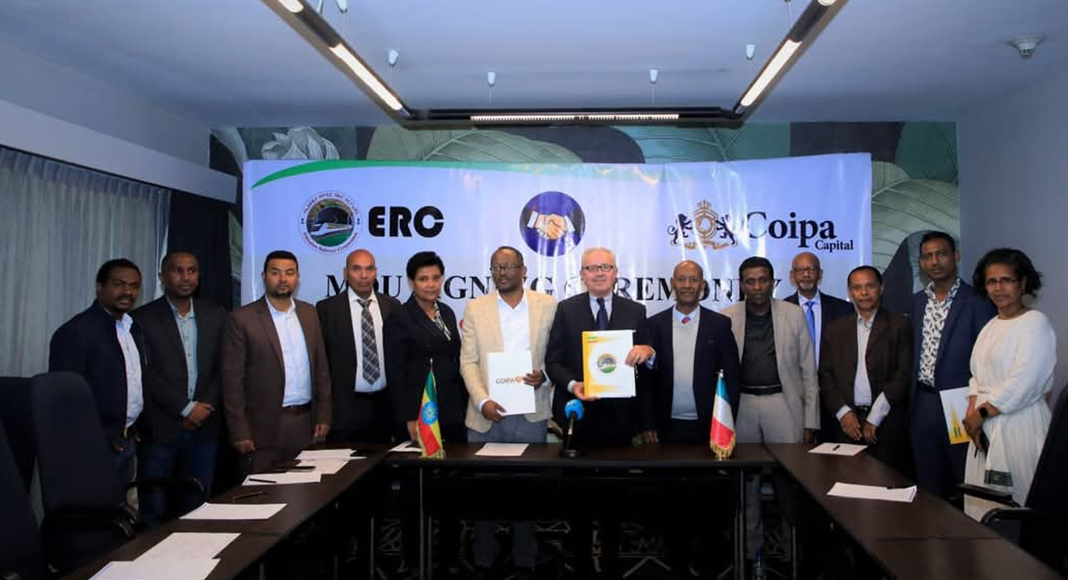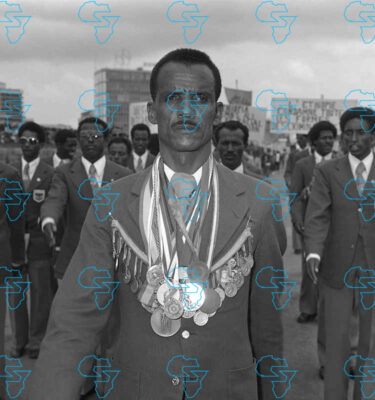
An international arbitration case between the debt-laden Ethiopian Railway Corporation (ERC) and Turkish contractor Yapi Merkezi over a troubled rail project connecting Awash to Mekelle has taken a turn as the Corporation demands USD 1.6 billion in compensation for losses incurred as a result of the contractor abandoning the project.
It was Yapi Merkezi that initially lodged an appeal for USD one billion in compensation following claims it was forced to discontinue its work on the project due to the outbreak of the northern war in late 2020.
The Awash-Woldiya-Harar Gebeya-Mekelle railway project kicked off in 2015 with USD 1.7 billion in financing from the state-owned Turk Exim Bank. Systra MD, a French firm, was awarded the contract for consulting on the project, while Yapi Merkezi was in charge of the construction work.
The railway project, which would connect central and northern Ethiopia, features 10 substations, a dozen 10-kilometer long tunnels, more than 50 bridges, eight power stations, a dozen radio stations, and one primary workshop center, according to the website of the state-owned ERC.
However, the contractor abandoned the project on grounds of safety concerns as the two-year armed conflict raged near some of the project sites. Yapi Merkezi alleges that part of the infrastructure was damaged by the fighting, and some of the equipment had been looted.
– Advertisement –
The dispute has been taken to the London Court of Arbitration, where proceedings have been underway for a year.
Getu Gizaw, deputy CEO for business development at the state-owned ERC, told The Reporter that hearings have been conducted but a decision is still forthcoming.
“We’ve organized a team of seasoned international lawyers and engineers and responded sufficiently to Yapi. It requested nearly one billion dollars in compensation. But we calculated the damages incurred because Yapi stopped working and demanded 1.6 billion dollars in compensation from Yapi instead,” said Getu.
He expects the court to announce its decision next month.
Getu disclosed the Corporation is in the process of transferring custody of the rail project’s security to regional administrations.
“It was under the protection of individuals,” he said.
The dispute with the Turkish contractor comes as ERC struggles to stay afloat.
Getu also disclosed that the Corporation has incurred 264 billion birr in losses following the liberalization of the foreign exchange market in July, as the Birr’s drop in value magnified ERC’s already hefty debts.
The Corporation’s projects, including the flagship Ethio-Djibouti and Addis Ababa Light Rail lines, were constructed using loans denominated in foreign currency.
“Other projects suspended currently, including the Awash-Mekelle project, were also started with loans. These loans eventually dragged down ERC’s financial standing, pulling its financial soundness to almost zero,” Getu told The Reporter.
The currency floating has hit ERC’s books hard.
“If this situation continues, ERC’s debt will continue on to the trillions. Then ERC will not be able to continue as an institution. Most ERC projects are financed by government loans or sovereign loans,” said Getu.
Last month, Parliament approved the issuance of 900 billion birr in bonds to be put towards the settlement of unrecovered loans handed out to state-owned enterprises (SOEs) by the Commercial Bank of Ethiopia (CBE).
ERC accounted for 97 billion birr of the bad debt, which taxpayers will have to pay over the coming decade.
“We are in talks to transfer the foreign debt to the government as well,” said Getu. “We’re working to turn ERC into a commercial entity, instead of accumulating debts. We are planning to generate income by working with partners and in joint ventures.”
The Corporation is looking to shift towards a more sustainable financing model. Its strategy is to conduct feasibility studies for attractive projects and reach out to financiers to cover costs instead of relying on loans.
“We have several projects underway whose feasibility studies are finalized and are being proposed to investors,” said Getu. “If we try to finance these projects using the old model, we will only cause an additional burden on the country.”
Projects in the pipeline include rail lines linking Kombolcha to Port Sudan; Modjo to Moyale and Lamu (Kenya); Modjo to Berbera; Modjo to Assab (Eritrea); and Sebeta to Jimma.
He hopes to see the administration’s economic reforms attract more investors to Ethiopia.
There are still no private investors involved in Ethiopian railway development projects but ERC has signed agreements with a number of them, according to Getu. He points to multimodal railway transport as an example of collaboration between the government and investors, both local and foreign.
On December 12, 2024, ERC and the Italian COIPA capital signed a memorandum of understanding for joint ventures in railway infrastructure projects. Key among the projects included in the MoU are the logistics hub projects along the Ethio-Djibouti railway, a railway academy project, and a railway connecting the Ogaden basin to Djibouti for efficient export of hydrocarbons and minerals. The MoU also includes a restructuring of ERC’s construction and consultancy business units.
The Corporation is in the process of securing a multimodal railway operator’s license, according to Getu. A foreign firm called AGL and GetAs, a local business, are also working to secure licenses.
“We have finalized requirements for a multimodal operator’s license. But the capital structure of ERC is a bit problematic. Existing regulations do not allow it to utilize the resources of ERC for multimodal purposes. The government is rearranging some legal frameworks to allow us to get involved in multimodal transport,” said Getu.
The African Development Bank (AfDB) has agreed to finance a feasibility study for the Modjo-Moyale-Lamu project, according to the Deputy CEO. The Bank also financed the feasibility study for the Kombolcha-Port Sudan project, which will require a huge amount of funding.
“On Ethiopia’s side alone, it will take between six and seven billion dollars,” said Getu. “Railway projects are capital intensive.”
.
.
.
#Debtsoaked #Railway #Corporation #Demands #USD1.6bln #Turkish #Contractor #Arbitration #Case
Source link











